User Story Map is becoming a popular user story management technique through the efforts of Jeff Patton and others. The user story tool allows you to establish multiple levels and dimensions for a backlog through the breakdown of user needs as user activities, user tasks, epics and user stories. Typically, an agile development team makes use of story map in collaborative meetings in identifying the desired results the end users want to achieve.
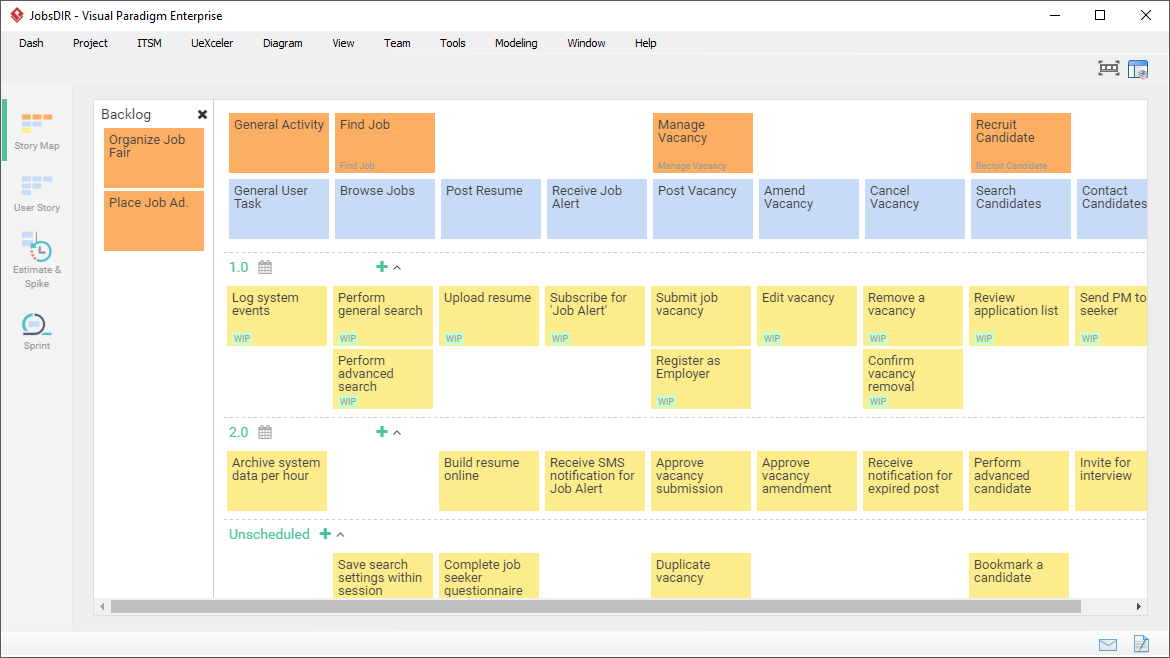
Here are few benefits of using story map as a user story tool:
- Manage backlog with an overview and leveled structure
- Brainstorm, discuss and prioritize user needs in a collaborative approach
- Manage activities and tasks, and divide them into user stories systematically
- Drag & drop arrangement and prioritization of user activities and user tasks, or drill down to refine user story list visually
- Manage user stories in the online user story tool or in desktop environment, which suit both a remote and co-location environments.
- Identify features from visual models and have them stored in backlog, be added to map, broken-down as user stories, and to Affinity Table for automated story estimation and Spike identification
- Update story status with progress indicators
- Receive user activities as a piece of requirement from wide variety of sources such as BPMN, use cases and etc.
Visual Paradigm makes the story map feature available in both the desktop application and as a cloud user story tool. It represents a journey a customer undertakes with a product, including the identification of user activities (also called backbone) and a group of related tasks for achieving the activity. User organizes a backlog of work based on the user activities and the associated tasks by a drag & drop user interface.
Building a Story Map
Story map is a 4-level hierarchical structure for requirements gathering. Story map starts from a collection of user features received from different sources (i.e. backlog), and these user features will be achieved as an activity by performing some tasks. And these tasks can be transformed into epics and then user stories for software development.
Story Map Structure: User Feature for achieving a Goal (Backlog) > Activities > Tasks > Epics > Stories
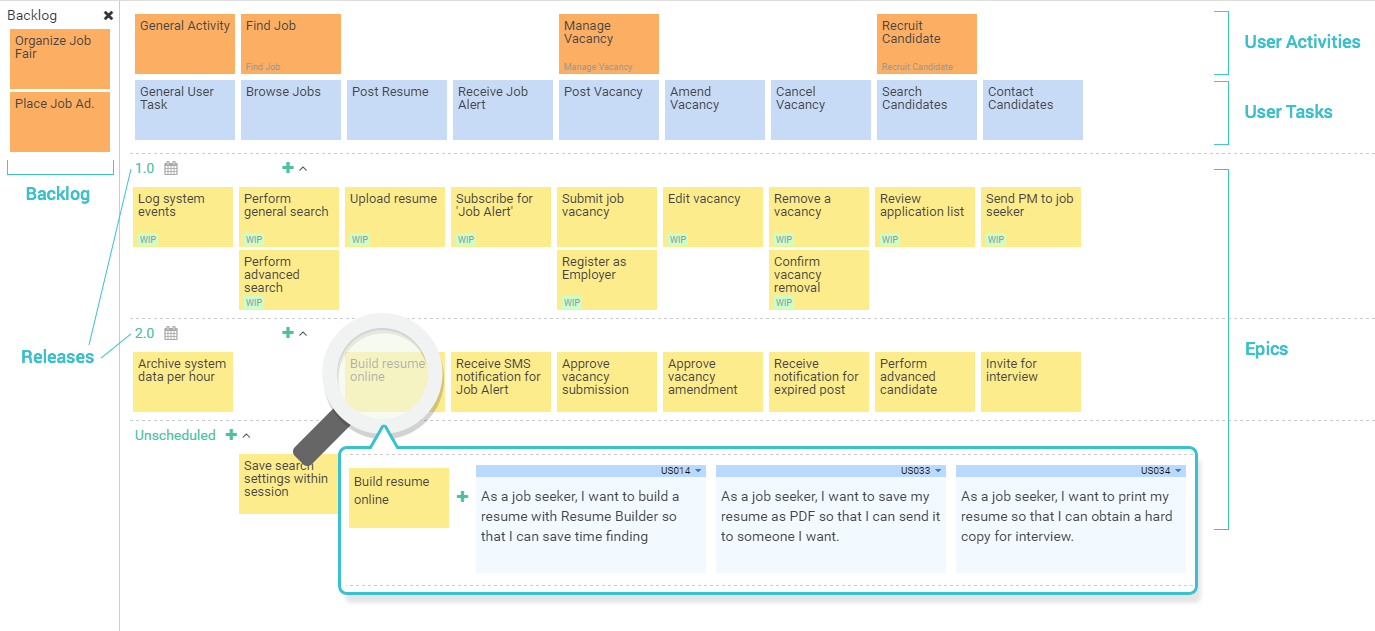
Steps to Planning a Story Map
To facilitate agile development, Story Map can receive user features identified from different sources. As mentioned above, it could be the requirements derived from EA contracts, work packages from project management initiatives or ad-hoc analysis such as-is and to-be analysis, use cases in a use diagram to be integrated with agile software development and etc.
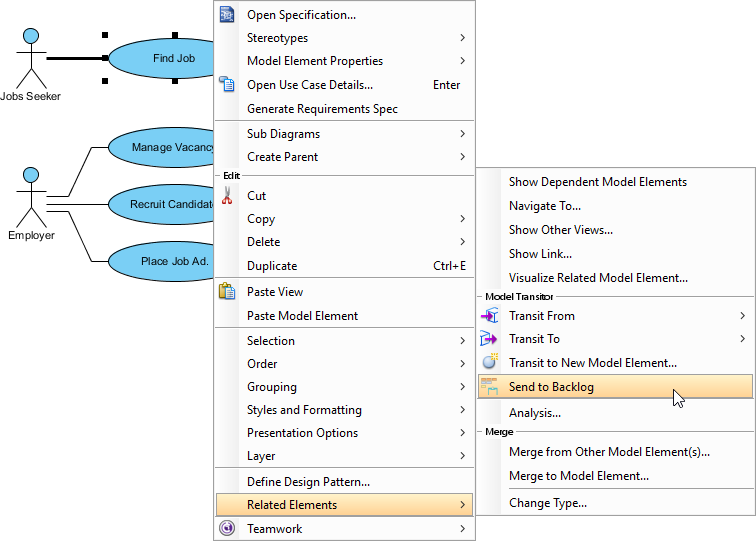
Assume that, we have already accumulated a list of user features in the story map backlog from multiple different sources. A user feature will be achieved as an activity by performing some tasks. Each of the tasks could be further decomposed into a few epics (bigger user stories). Each of the epics contains a list of user stories which are decomposed into a size that is suitable to be fitted into a sprint iteration. Here are the steps involved for planning a story map:
- Drag user features to the top row of the Map from the left to the right. Each of these features on the top row of the map is call user activity.
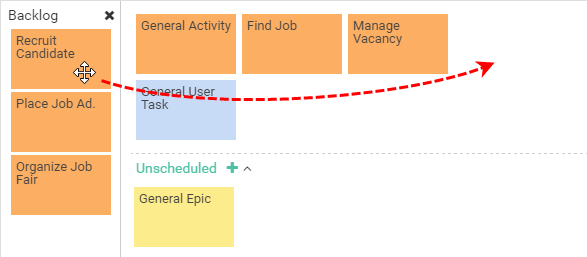
- Create a number of steps required to complete the activity, known as user task.

- Each of these user tasks could be decomposed into a number of epics.
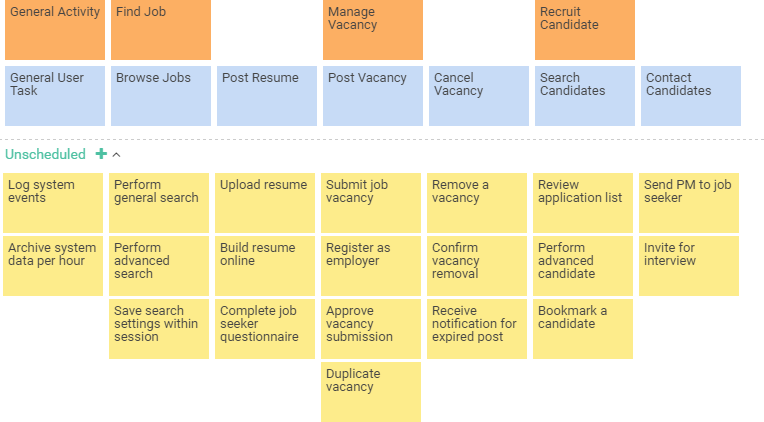
- Under the epics, a list of user stories can be defined, which the size is suitable for putting into a sprint.
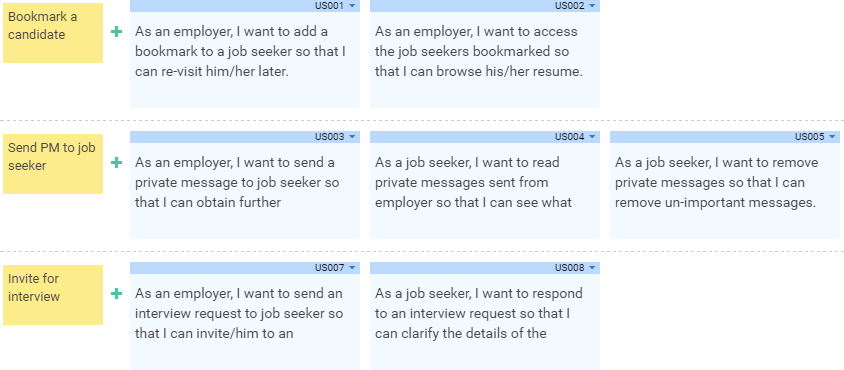
Note that: We can consider the priority of implementation to be scheduled from the left to the right and the user stories from top to the bottom.


